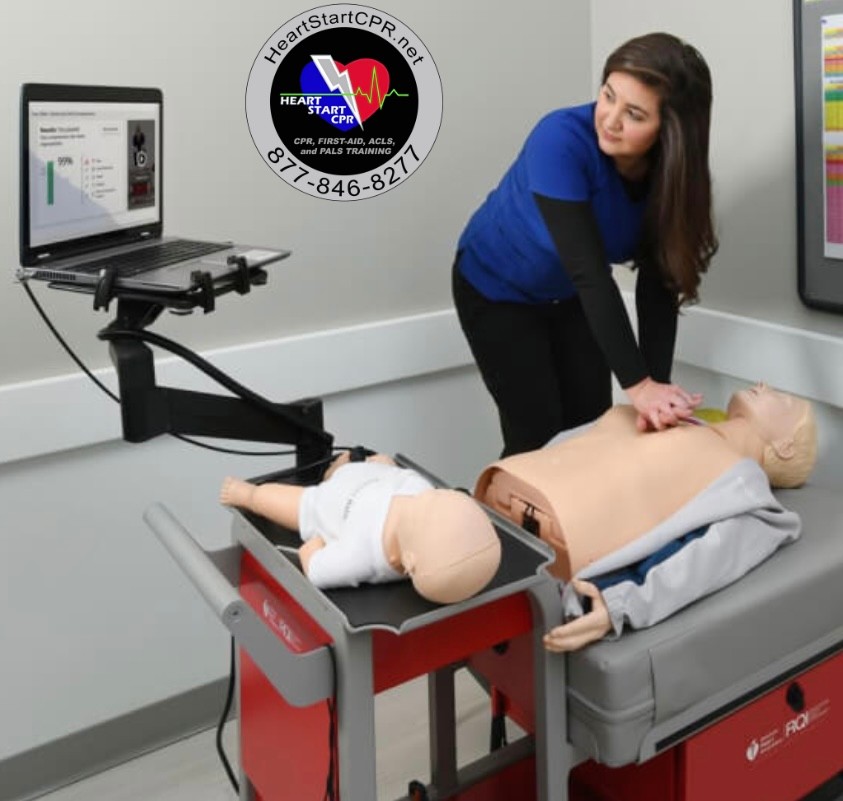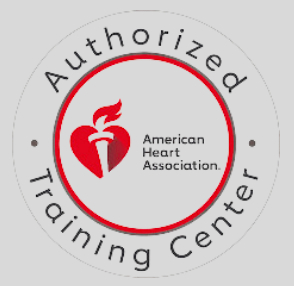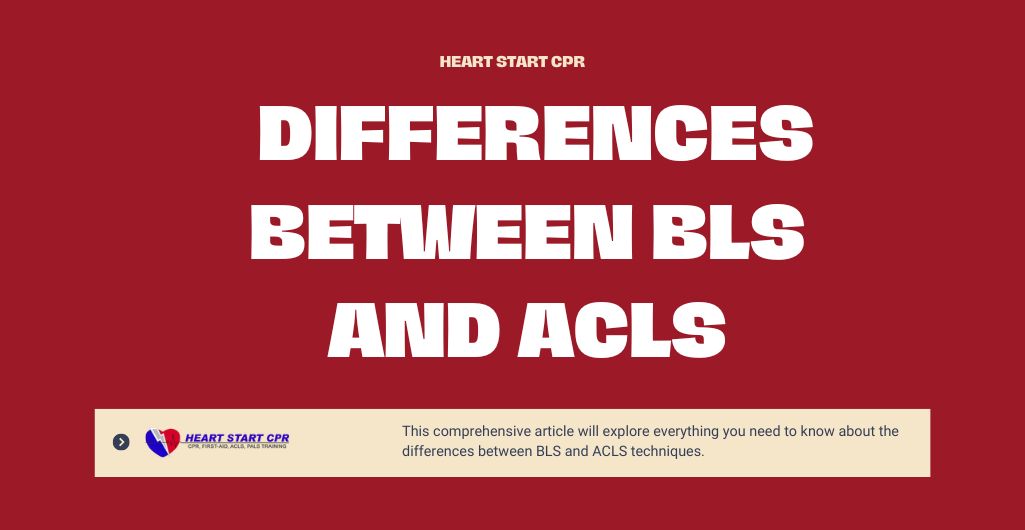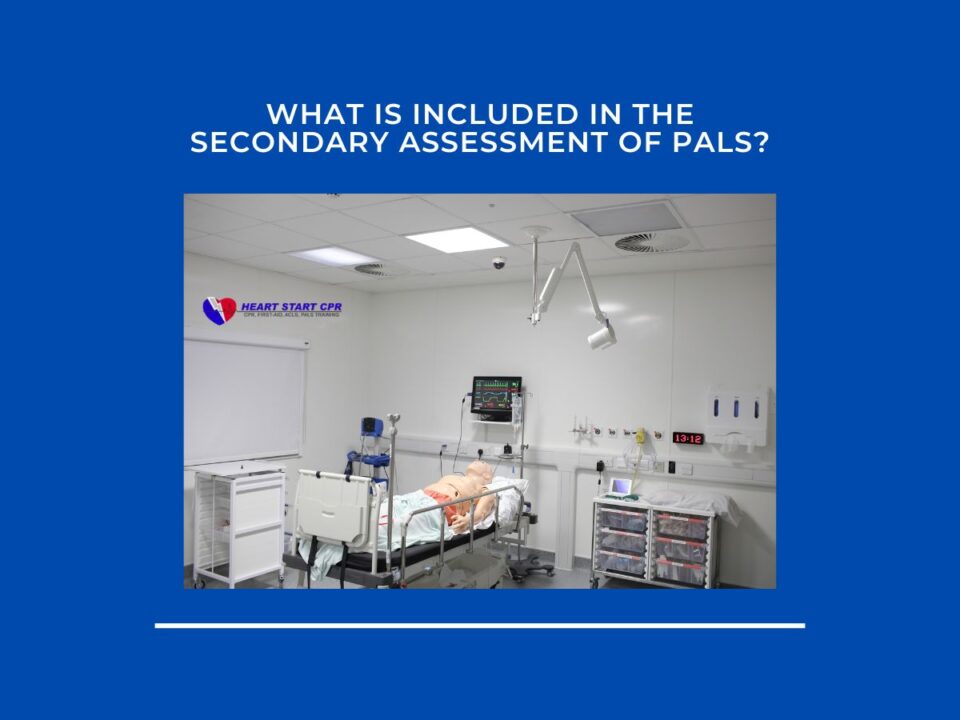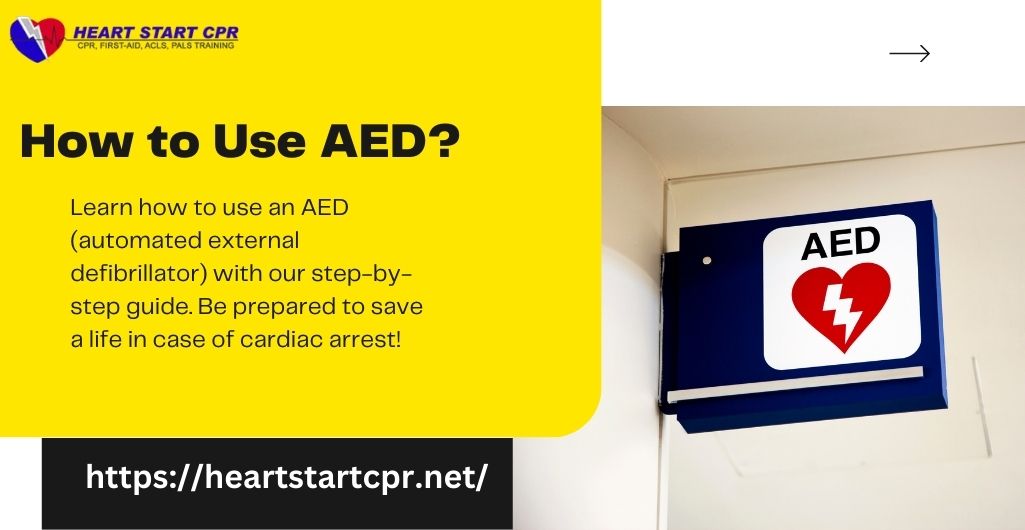
How to use an AED: Step-by-step Guide for Using AED
March 28, 2023
What to Do After Your PALS Certificate Expires?
April 12, 2023Medical emergencies can occur anytime, anywhere, and preparing before a sudden cardiac arrest will increase their survival chances. When someone’s heart unexpectedly stops pumping, every second counts if they experience a medical crisis. So, Knowing about life-saving techniques will give you more confidence to respond immediately during an emergency. Basic life support (BLS) and Advanced Cardiovascular Life Support (ACLS) are the two skills that can help someone’s life in an emergency. With proper training, these techniques are adequate responses to cardiac emergencies.
But what exactly are the differences between ACLS and BLS? When should each technique be used? This comprehensive article will explore everything you need to know about the differences between BLS and ACLS techniques.
What is BLS?
Basic life support (BLS) is a life-saving technique that can be used in emergencies. It is designed to help someone experiencing a life-threatening condition such as cardiac arrest, choking, drowning, or a severe allergic reaction. Similarly, BLS focuses on maintaining the patient’s airway, breathing, and circulation. BLS’s primary goal is to keep the victim’s vital organs functioning or make them alive until the advanced medical team arrives.
So, what is BLS certification? BLS Certifications involve various life-saving techniques such as Cardiopulmonary resuscitation (CPR), checking pulse, and rescuing breath without compressions. It also includes equipment like an Automatic external defibrillator (AED) and bag valve masks. However, eligibility to perform BLS is not limited to healthcare professionals like doctors, physicians, nurses, paramedics, EMTs ( Emergency Medical Technicians), etc. Anyone can learn the basic life support skill.
You can learn BLS skill by getting involved in an online BLS training course provided by any AHA authorized provider like Heart Start CPR. Heart Start CPR is an American Heart Association authorized training center and provides emergency training.
Also learn Who Needs BLS Certification?
What are the Basic Steps of BLS?
Before entering the next phase, we will discuss the steps of Basic Life Support (BLS).
The basic steps of BLS include:
Checking for responsiveness: The first step in BLS is to check whether the victim is responsive. It can be done by tapping or shaking them gently and asking if they are okay.
Call for Help: If the victim does not respond, they need emergency medical services (EMS). You can immediately call 911 to ask for help.
Open the airway: After, open the sufferer’s airway by moving their head back and lifting their chin.
Check for breathing: Check the victim’s pulse and breathing. It may be possible the sufferer is looking, listening, or feeling during cardiac arrest.
Start chest compressions with rescue breaths: It’s time to compress his/her chest if they are not breathing. It involves pushing down hard and fast on the center of the chest to supply blood throughout the body. You can do 30 chest compressions, including 2 times rescue breathing on the patient’s mouth. While giving rescue breathing, make sure the victim’s nose is blocked. All this procedure will be performed 4 times during an emergency. Learn how can you achieve a high chest compression fraction
Continue the procedure until help arrives: Still, if the victim is not responding, you can continuously perform chest compressions with rescue breaths until the advanced medical team arrives.
Related Post: What is the Indication for Mouth-To-Mouth Rescue Breaths?
What is ACLS?
Advanced Cardiovascular Life Support (ACLS) is a life-saving technique that can be used in emergencies. It requires advanced medical team support in the hospital compared to Basic Life Support (BLS). ACLS is designed for healthcare professionals to help someone experiencing cardiac arrest, stroke, or other life-threatening conditions. Similarly, it includes advanced airway management, electrical therapy, and medication administration. Take an online ACLS class at Heart Start CPR, the same day certification is also available.
ACLS educates the participants to know the signs of early warning such as respiratory and cardiac arrest. ACLS certifications might get the participants including police officers, firefighters, doctors, and EMTs.
- Proficient BLS administration.
- Managing respiratory arrest
- Recognizing cardiac arrest and managing them
- Post-cardiac arrest care
- ECG reading
- Intravenous care
- Airway management
- ACLS pharmacology
What are the Basic Steps of ACLS?
ACLS is a close step as compared to BLS techniques. The basic steps of ACLS include the following points:
Assess the patient: The beginning steps of ACLS are to assess the patient’s condition and identify the underlying medical problems of the individual.
Provide advanced airway management: ACLS involves advanced airway management techniques such as intubations and ventilation. It will help to ensure the patient is receiving adequate or not.
Learn ACLS Algorithms
Difference Between BLS and ACLS Techniques
BLS algorithms and ACLS algorithms are standard techniques during an emergency. The primary difference between ACLS and BLS is that ACLS requires more advanced knowledge and expertise than BLS to perform accurately in a hospital. However, if healthcare professionals want to perform ACLS, they first need the foundation skills of BLS. By law, nurses and other healthcare providers must have these basic skills to save an individual’s life. Also, both courses teach supportive treatment to provide advanced help for a medical emergency.
In simple words, BLS techniques can be performed outside the hospital and are specially designed for those who want to learn life-saving skills. Anyone can grasp these techniques to prevent future injuries or emergencies. Similarly, ACLS is designed for healthcare professionals such as doctors, nurses, and EMTs. It is performed in the hospital with the help of advanced team members.
| Basic Life Support ( BLS) | Advanced Cardiac Life Support (ACLS) |
| BLS is an essential procedure used outside the hospital. | ACLS is a specialized procedure used in the hospital. |
| Anyone can perform with simple training. | It can only be performed by healthcare professionals with specialized training. |
| It is relatively easy to learn and remember. | ACLS is complicated because of the advanced procedure. |
| Medical technicians use BLS to sustain a patient’s life during an emergency. | ACLS is used to stabilize the patient by advanced medical team members. |
Conclusion
BLS is known as the foundational knowledge, and it is created for anyone who wants to prepare in an emergency. It can be a viable option to handle life-threatening situations and help save lives outside the hospital. ACLS involves more advanced knowledge for health care professions for utilization.
Both are essential life-saving procedures for preventing cardiac arrest, choking, respiratory arrest, and other symptoms. If you prepare yourself before the emergency, handling the immediate situation will be easier. What do you think about these two techniques? Let me know in the comment section. I hope this article adds more value to your life in preventing upcoming dangerous situations.

